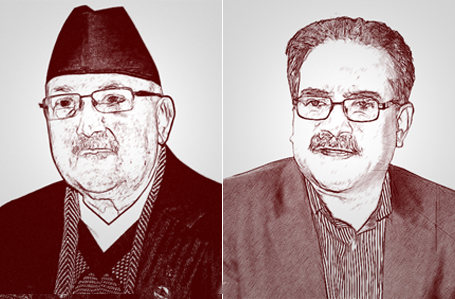Addressing Nepal's State Violence

Human history and creation of nation-state borders are familiar with violence in all forms. Nepal’s brutal timeline can be traced back to 1768 when the king Prithvi Narayan Shah unified the Himalayan nation through military violence. Prior to that, the lynched republic was once a scattered land ruled by numerous kings. The notion that most nations were founded by spilling blood cannot be overruled.
State violence is defined as: “(1) Terrorism carried out or sponsored by a government, which involves deliberate attacks on civilians, for the purpose of attaining a political or religious goal and (2) Acts of violence committed by an official state, military or sponsored by a sovereign government outside of the context of a declared war, which target civilians or show a disregard for civilian life in attacking targets—either people or facilities.”
The above-mentioned definition, however, changes when the involved party acquires the state power. On the other hand, World Health Organization has defined violence differently—“Violence is the intentional use of physical force or power, threatened or actual, against oneself, another person, or against a group or community, which either results in or has a high likelihood of resulting in injury, death, psychological harm, maldevelopment, or deprivation", although the group acknowledges that the inclusion of "the use of power" in its definition expands on the conventional meaning of the word.”
Sidelining national violence in the name of power stability is dangerous in the long run. The sad part, however, is that several developed nations have been founded on the very premise that one particular group ought to suffer for the other ruling group to prosper and rule. Few countries have set up Truth and Reconciliation Commission (TRC) in order to “focus on the past, rather than ongoing, events; investigate pattern of events that took place over a period of time; engages directly and broadly with the affected population, gather information on their experiences; is a temporary body, with the aim of concluding with a final report; and is officially authorized or empowered by the state under review.” The most famous TRC so fair is of South Africa and have been considered as the numero success till date. Other nations have struggled in this regard.
Nepal’s own TRC was constituted on February 2015 in relation to the Enforced Disappearances Enquiry, Truth and Reconciliation Commission Act, 2014. However, the TRC has little or no success so far. Its formation was possible after the signing of Comprehensive Peace Accord (CPA) in 2006 between CPN-Maoist and the Seven Party Alliance (SPA) headed by Maoist Chairman Prachanda and the late Nepali Congress Prime Minister Girija Prasad Koirala. Fast forward 2016 and the coalition government compromise of the UCPN-Maoist and the NC led by PM Prachanda and Deuba who are often perceived as one of the main perpetrators of the civil war.
There’s talk among few Nepali political circle that the reason for Prachanda’s move to ditch K.P. Oli was due to the inflexibility of UML party’s stand on dealing with civil war cases and that he was blackmailed on his past crimes. The current PM and duo Deuba who had put a price on his head during the insurgency are fearful that their past misdeeds will transform them into Nepali Icarus.
History cannot be ignored and it is a common knowledge that most nations were formed by shedding blood. Even from the realist lens of International Relations, military power is important to protect one’s boundaries, if not for expansionism. In that sense, Nepal is nowhere in terms of military power. The problem with peace, therefore, is that maintaining a state’s sovereignty involves making certain groups the internal and external enemies. Does it mean there’s no hope for peace and that state-building will always involve violence?
The problem with building a nation peacefully is unreal. Only a few nations in the world have achieved this feat and even in the 21st century we are struggling. Smaller countries like Nepal needs a pragmatic approach to bring an end to the transition process. Firstly, it is important to make amends with the Madhesi people and secondly it is imperative that the past violence is addressed logically and properly. If the victims are willing to forgive and move on, then there’s a hope. It is to be noted that the TRC and Commission of Investigation on Enforced Disappeared Persons (CIEDP) have six months to look into 60, 000 cases. The commission states that more complaints via mail are yet to be received.
A discourse in addressing state violence is needed immediately. The complexity of Nepal’s current state structure cannot be the excuse to ignore the mistreatment, torture, and disappearance of thousands of Nepalese during the civil war. Maybe the perpetrators will escape punishment by standing behind the shadow of political power, but its long-term implications are unpredictable. The fear victims turn into perpetrators is a possibility, just like the rebel group evolving into various political groups within Nepal. We had a civil war once and there’s possibility of another one. It is unsure if Nepal’s sovereignty will exist in future, militarily.



